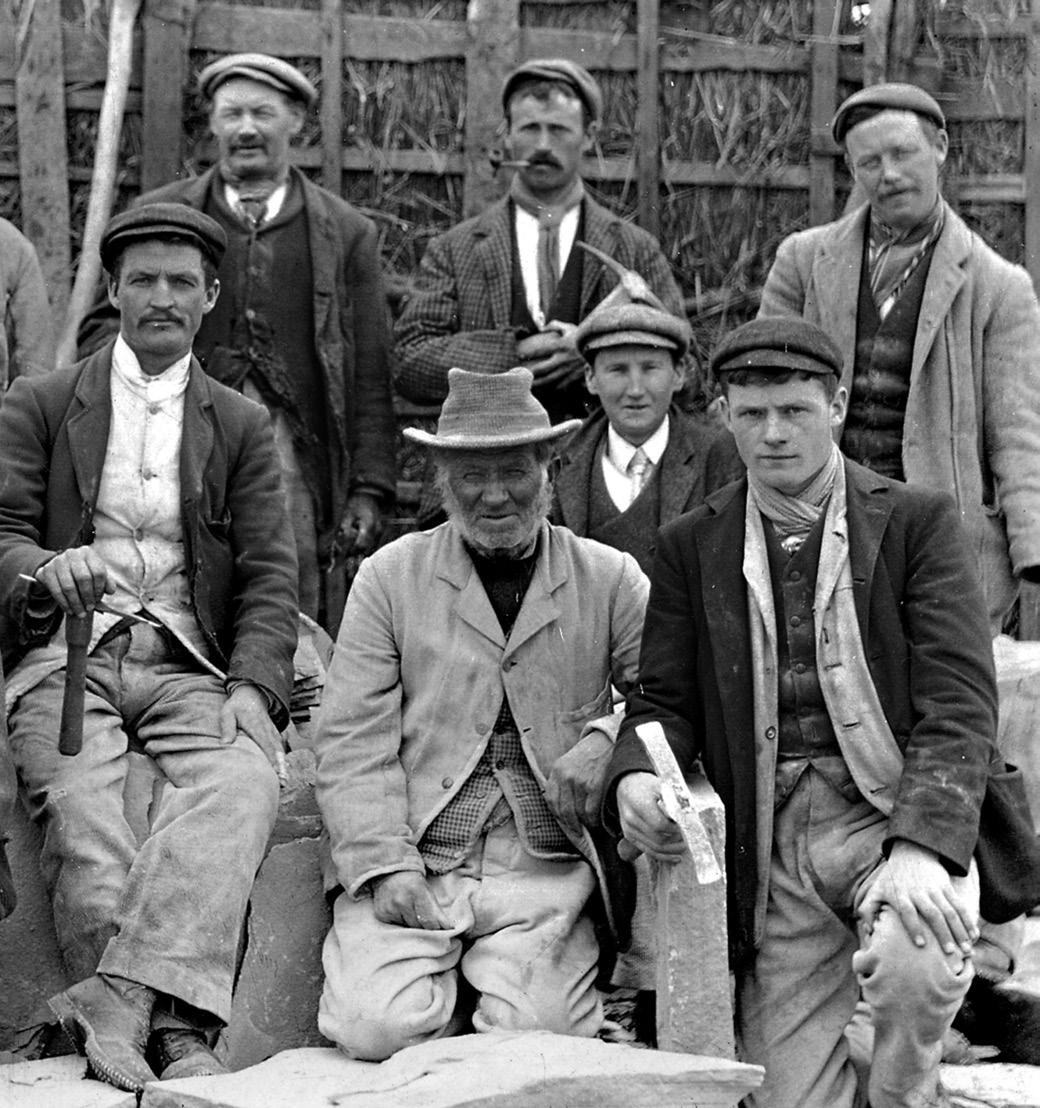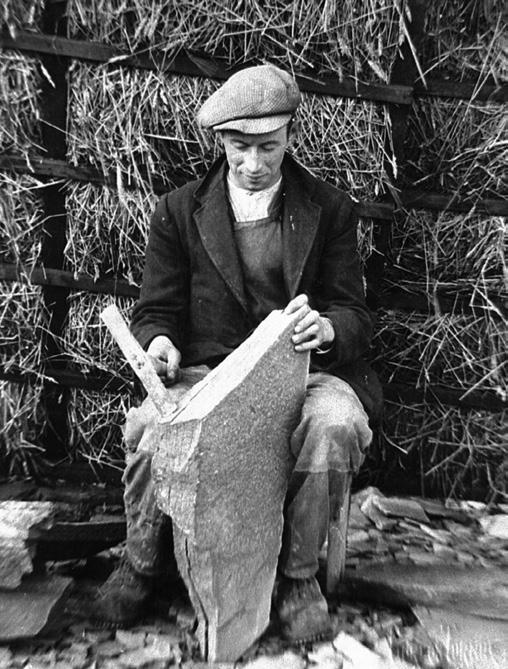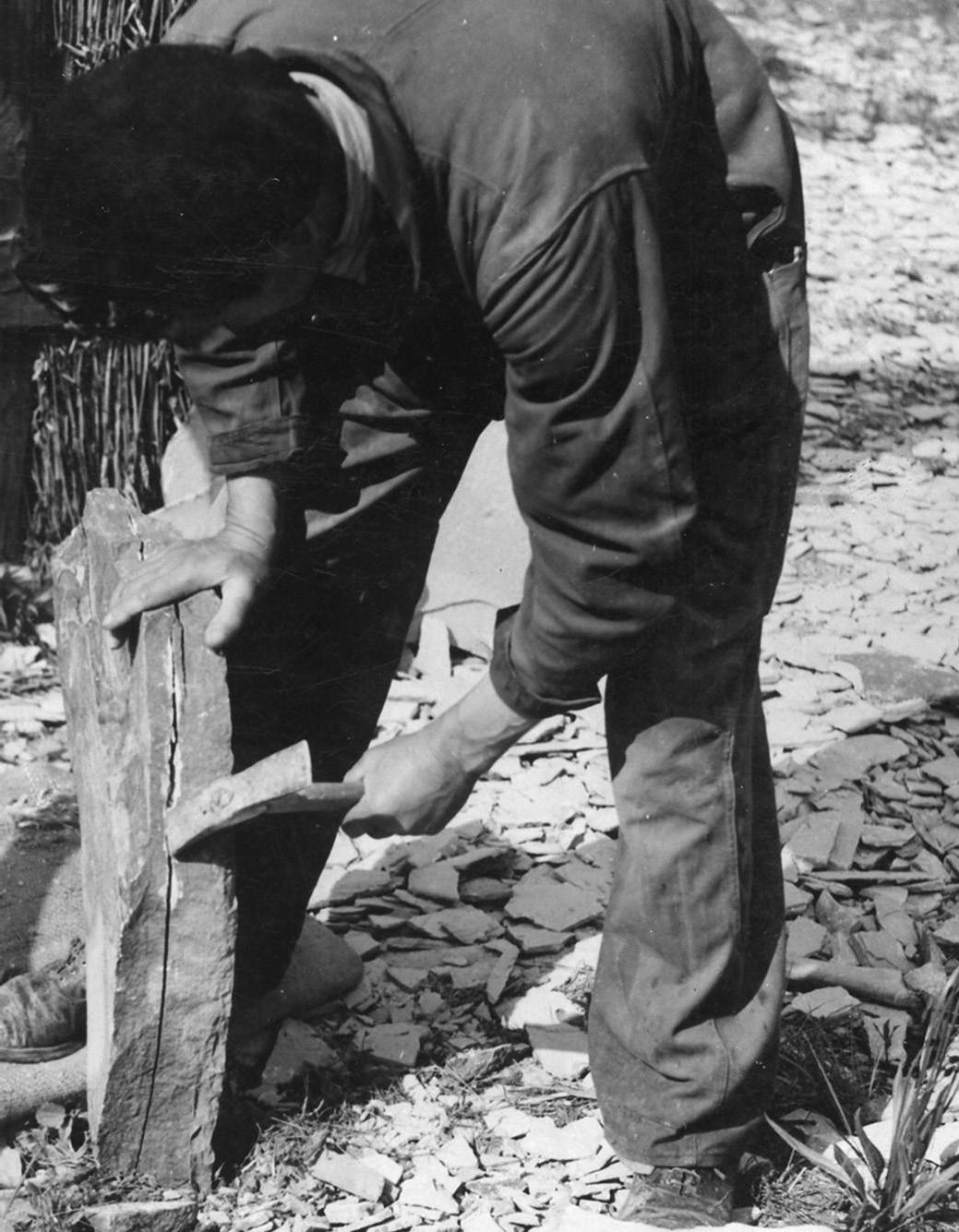
6 minute read
PUT IT ON THE SLATE The story of
Like diminutive Rutland itself, the National Trust property is one of the smallest in the conservation organisation’s group, cared for by volunteer custodian Paul Way and just three keyholders, who each unlock the building to show visitors around.
Advertisement
“The property itself is fascinating enough, with a 2010 survey and dendrochronological techniques being used to date it to around 1474,” says Paul.
“But we’ve ensured that it can also serve as a museum and reflect one of the area’s other important historical features; Easton’s Collyweston slate mining industries.”
Many of Rutland’s heritage properties and historic buildings are constructed from the band of oolitic limestone that runs diagonally through Rutland right down to Dorset.

It’s still mined today in quarries in Clipsham and Greetham. By contrast, though, Collyweston slate is much rarer, and below Easton was a stratum of slate, just 2ft high and 30ft below the ground.
Slate was found underneath its eponymous home of Collyweston, at Easton and also under Duddington, where it occasionally appears in a working limestone quarry.
Collyweston slate was used in the construction of Rockingham Castle’s roof, around 1375. But around the 1500s, a new way to process the material was more widely used.
The process of ‘frosting’ began to be more widely used and by the late 1800s in the open pits and mines around Collyweston. The process used the expansion of freezing water to split the stone once it was hauled
Top: The Priest’s House was dated by dendrochronological analysis to between 1474 and 1499. It features stone mullion windows dating back to the C15th and also served as the village school before use as an agricultural building. Main: Collyweston slaters with their tools, C 1910.

from the 30ft pits underneath the mines. Chunks of fissile slate known as logs were brought to the service and then laid out in a field. During sharp frosts the material was watered, with the resulting expansion of ice beginning the process of splitting the logs into workable sized pieces.
Given the necessity of freezing conditions, the winter activity was physically laborious but also bitterly cold for its hardy workers too.
Splitting of the smaller chunks of slate was completed with a cliving hammer, before teams of men would sit with the piece between their legs and the workers would then use a trimming hammer to cut the individual pieces to size. The final step in the production of slates would see a hole made for the retaining peg using a bill and helve - a bill being a sort of punch or scribe, and a helve being a fairly hefty handle.
All of the tools used in the production of the slate are on display in Priest’s House, alongside a social history including local bygones and memorabilia. Alongside the permanent slate mining exhibits is space for peripatetic exhibitions (see below).
Mining in Collyweston continued until the 1800s until improved transport made the availability of slate from areas like Wales cheaper, whilst steady declines in rural areas made sourcing the necessary labour for the role impossible.
Further losses from the First and Second World War exacerbated the labour shortage, and by the 1950s, mining in the area had ceased.
“The original Rector of the house was Thomas Stokes, a relative of William Browne, but when he died in 1495, he left money for a chantry priest to say prayers for his soul,” says Paul. “Following Henry VIII’s dissolution of monasteries and chantry

houses, village priests occupied the house until an adjacent rectory within the house’s curtilage replaced it in 1698.”
“Priest’s House was latterly used as a village schoolroom and as a outbuildings for a nearby farm housing livestock. It was taken into custodianship of the National Trust in 1968 and is now one of the organisation’s smallest properties.”
“It’s quite right to call it a hidden gem - many are unaware that the area has its own National Trust property. But visitors are always thrilled not only by the preservation of the 15th century building with its fascinating architecture - its circular stone staircase, for example - but also by the role the house has in remembering the area’s slate mining heritage, too.”
n Priest’s House is based at Easton on the Hill, and is open to visitors by permission of its three keyholders. 38 West Street, Easton on the Hill, Stamford PE9 3LS, call 01832 205158 or see www.nationaltrust.org.uk.
Above: This image from the mid-C20th shows one local mason using a cliving hammer to split the fissile slate ‘logs.’ Right: Using a cliving hammer.


You can now enjoy your Pride Magazine with our brand new App on your tablet... completely free of charge!

Read online now at www.pridemagazines.co.uk

SMALL BUT PERFECTLY FORMED
They say first impressions count... well, the perfect first course is modest in size but bold in flavour, setting out a chef ’s intentions and dazzling with their presentation...

They say you only get one chance to make a first impression. And it’s true.
We’ve all been to a restaurant for the first time and perused a menu, waiting in anticipation for the first dish to arrive.
Typically that dish is your starter. Quantity isn’t essential, but quality and presentation certainly is. It’s the chef ’s opportunity to make that all important first impression on their customer.
As a person who prefers savoury dishes to sweet ones, I’d rather enjoy a starter and forgo a dessert, and what I especially love about starters is their often intense and bold flavours. Happily, the days of gloopy prawn cocktails or melon are long gone. Today’s starters are as much about presentation as whacking flavours. If I’m honest, I rather mourn the disappearance of soup from restaurants’ menus, but the ineffable rise of the quality pub restaurant has lead to the happy reinvention of many old favourites from Scotch Eggs to scallops - all promising starter options.
With lockdown slowly retreating and restaurants due to reopen as Pride goes to press, we’re delighted be able to implore our readers to revisit independent pubs, restaurants and hotels to enjoy that long forgotten pleasure of dining out... beginning your meal with these absolutely belting starters! >>
Below: Some of the county’s most talented chefs - Fuel Tank’s Chris Ansell, Tom Hall at The Petwood Hotel; Chris Huggett of The White Hart, Ufford, Sean Hartnett of The Admiral Hornblower, Tony Fitt at Stapleford Park, Michael Prescott, Head Chef of The Griffin Inn, David Bukowicki, Chef at Barnsdale Lodge and Holly Withers of Hoppi Dorri.
















